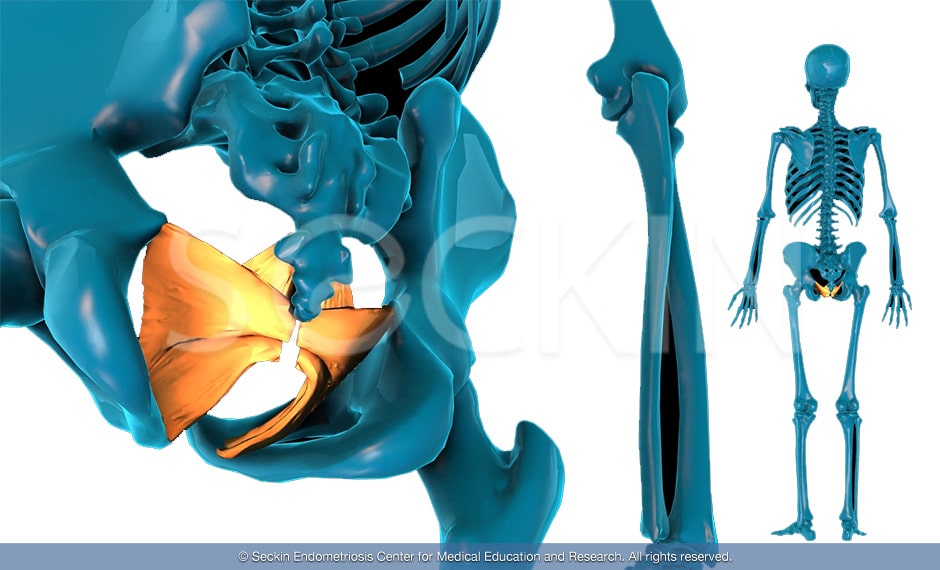Levator ani syndrome is a condition affecting the pelvic floor and causing pain in the rectal and perineal areas.
If you think of the pelvis as a bowl, the pelvic floor is the “bottom of the bowl”, where a sling of muscles helps to elevate and provide a muscular function to the organs in the pelvis. The role of the pelvic floor muscles is to support the pelvic organs such as the bladder, uterus, and rectum.
The levator ani is the largest component of the pelvic floor muscles. It provides support to the vagina, uterus, and rectum. It connects from the front, at the pubic bone, and at the back, at the tailbone. In levator ani syndrome, the pelvic muscles are chronically contracted.

Researchers think that the condition affects 6 in 100 people. Certain surgical procedures, such as those to treat and diagnose endometriosis, can increase the risk of developing levator ani syndrome.
Get a Second Opinion
Our endometriosis specialists are dedicated to providing patients with expert care. Whether you have been diagnosed or are looking to find a doctor, they are ready to help.Our office is located on 872 Fifth Avenue New York, NY 10065.
You may call us at (212) 988-1444 or have your case reviewed by clicking here.
Causes
It is not clear what causes levator ani syndrome in the general population. However, some factors may contribute to the development of the condition such as the prolonged holding of urine or stool, continued intercourse even if it is painful, childbirth, and injury to the pelvic floor from surgery or trauma.
Because the levator ani muscles are chronically contracted, there is a decrease in blood flow to the pelvic area. With time, this decreased blood flow can stimulate inflammation and cause pain.
Endometriosis and levator ani syndrome
Although the exact cause is not clear, endometriosis can increase the risk of levator ani syndrome. Because of inflammation, women with endometriosis experience severe pelvic pain. This can cause the pelvic floor muscles, including the levator ani to contract.
Certain surgical procedures to treat endometriosis, such as hysterectomy and low anterior resection of the rectum may also increase the risk of developing the condition.
Symptoms of levator ani syndrome
The symptoms of levator ani syndrome include pain in the rectum when sitting, after a bowel movement, and during urination or sexual intercourse. Other symptoms may include bloating, urinary incontinence, and urgency.
Diagnosis
There are certain criteria for doctors to diagnose levator ani syndrome. These are:
- chronic or recurring rectal pain lasting at least 30 minutes
- tenderness in the puborectalis muscle (part of the levator ani group of muscles)
- at least six months of symptoms with at least three of them being consecutive
- no other identifiable cause of the pain.
The puborectalis muscle is the muscle that wraps around the rectum and the pubic bone. Doctors will examine this as part of a physical exam to see if it is tender. They will also look at your medical history and ask you to describe your symptoms.
Treatment options
There is no single treatment that can be successful for all patients with levator ani syndrome.
The first thing that patients can do to relieve the pain is to use sitz baths (sitting in shallow warm water).
Lifestyle changes can also alleviate the symptoms of the syndrome. For example, a diet that contains a moderate amount of fiber can help with regular bowel movements and avoid constipation or diarrhea. It is also important to stay active and avoid prolonged periods of sitting. Daily relaxation techniques such as yoga and meditation can also help.
Pelvic floor physical therapy is another approach that can reduce the symptoms of levator ani syndrome. It involves a qualified physical therapist teaching the patient pelvic floor exercises where they contract and relax their pelvic floor muscles. Techniques such as biofeedback and digitally massaging the levator ani muscle can also help. In biofeedback, a probe is inserted into the patient’s vagina to monitor the working of the pelvic floor muscles including the levator ani. Finally, electro galvanic stimulation where a rectal probe sends electric pulses to the muscle can help reduce the pain in some cases.
To temporarily relieve the symptoms of levator ani syndrome, some doctors may prescribe muscle relaxants such as Flexeril (cyclobenzaprine).
Get a Second Opinion
Our endometriosis specialists are dedicated to providing patients with expert care. Whether you have been diagnosed or are looking to find a doctor, they are ready to help.Our office is located on 872 Fifth Avenue New York, NY 10065.
You may call us at (646) 960-3080 or have your case reviewed by clicking here.
Dr. Seckin is an endometriosis specialist and women’s reproductive health advocate. He has been in private practice for over 30 years at Lenox Hill Hospital with a team of highly skilled personnel.
Dr. Seckin specializes in advanced laparoscopic procedures and is recognized for his expertise in complex cases of deep infiltrating endometriosis of the pelvis. He is particularly dedicated to performing fertility-preserving surgeries on cases involving the ovaries.
He has developed patented surgical techniques, most notably the “Aqua Blue Excision” technique for a better visualization of endometriosis lesions. His surgical techniques are based on precision and microsurgery, emphasizing organ and fertility preservation, and adhesion and pain prevention.
Dr. Seckin is considered a pioneer and advocate in the field of endometriosis.
